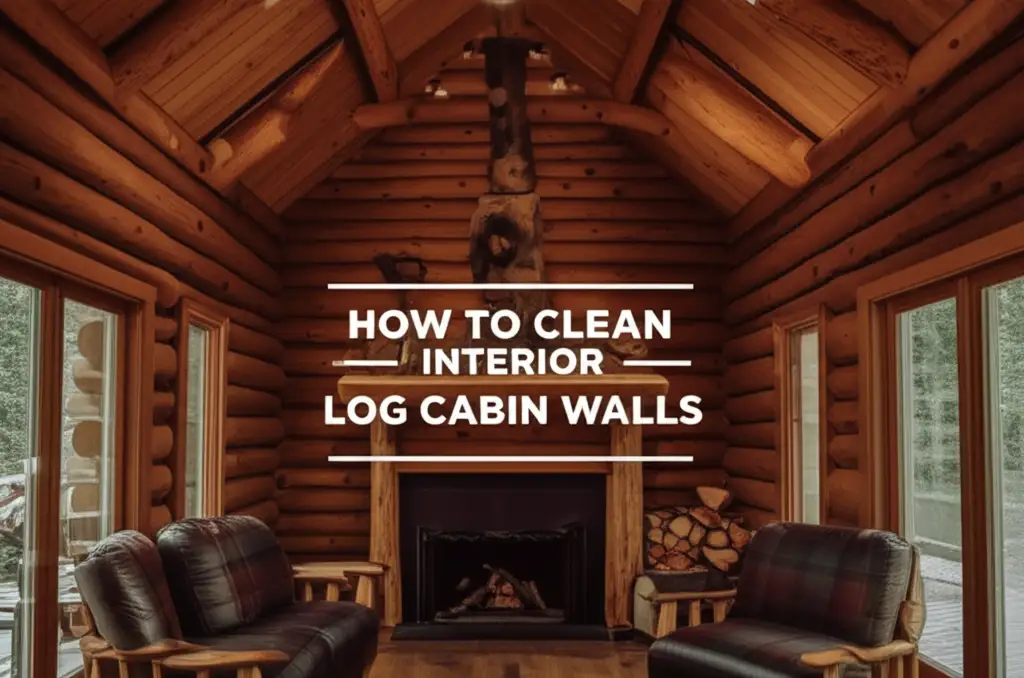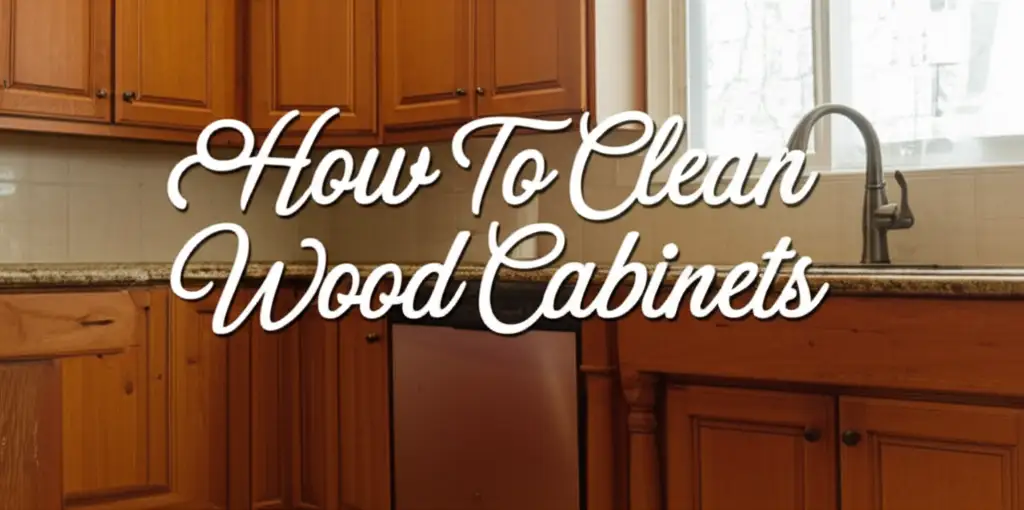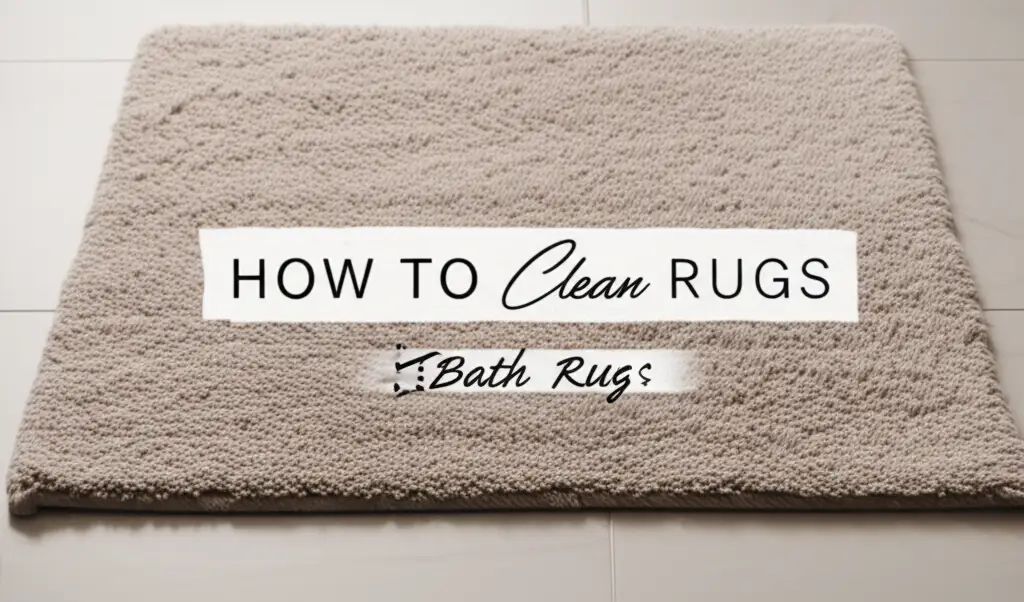· Home Cleaning · 15 min read
How To Clean Interior Log Cabin Walls

Cleaning Interior Log Cabin Walls
Stepping into a log cabin offers a unique sense of warmth and rustic charm. Those beautiful log walls define the cabin’s character. Over time, however, these surfaces collect dust, dirt, and even stains. Keeping them clean is essential for maintaining your cabin’s beauty and preserving the wood. You want to protect your investment and enjoy the natural aesthetic for years to come.
This guide will walk you through the process of how to clean interior log cabin walls. We will cover understanding your log walls, gathering the right tools, and applying proper cleaning techniques for both sealed and unsealed surfaces. You will learn specific methods for tackling common issues like mold or smoke residue. By the end, you will have the knowledge to keep your cabin’s interior walls looking their best.
Takeaway
- Identify Log Finish: Determine if your log walls are sealed or unsealed before cleaning.
- Gather Proper Tools: Use soft brushes, vacuums, and mild cleaners.
- Always Test First: Apply cleaners to an inconspicuous area before full application.
- Dust Regularly: Prevent dirt buildup with routine dry dusting.
- Address Issues Promptly: Clean spills or mold as soon as you notice them.
Quick Answer
To clean interior log cabin walls, first determine if they are sealed or unsealed. Dust thoroughly using a soft brush vacuum attachment. For sealed logs, gently wipe with a damp cloth and mild soap. For unsealed logs, use dry cleaning methods or specialized wood cleaners. Always test products in a hidden spot.
Understanding Your Log Walls: Types and Finishes
Before you start any cleaning project, it is important to know your canvas. Log cabin walls are not all the same. They come in different wood types and, critically, they feature various finishes. Understanding these differences directly impacts how you should clean interior log cabin walls. Improper cleaning can damage the wood or its protective coating.
Most interior log walls are either sealed or unsealed. Sealed logs have a protective layer like varnish, polyurethane, or a clear coat. This finish shields the wood from moisture, dirt, and wear. It also makes cleaning much easier. Unsealed logs, also known as raw or unfinished logs, lack this protective layer. They are porous and absorb liquids easily. This means they are more susceptible to staining and require a different cleaning approach. You can usually tell the difference by touch and appearance. Sealed logs feel smooth and often have a slight sheen. Unsealed logs feel rougher and look duller. Knowing your log type ensures you use the correct cleaning method.
Some log walls might also have a stain underneath a clear coat, or they might be painted. Painted logs are treated differently than natural wood. For these, you might follow methods more akin to how to clean painted walls without leaving streaks. Always confirm your wall’s finish before applying any moisture or cleaning agents. This first step protects your cabin and makes your cleaning efforts effective.
Essential Tools and Supplies for Log Cabin Cleaning
Having the right tools makes a significant difference when you clean interior log cabin walls. You need items that are effective yet gentle on the wood. Using abrasive materials can scratch or damage the log surface. Gathering everything beforehand also streamlines your cleaning process. This preparation saves you time and effort later on.
Start with a good quality vacuum cleaner. Make sure it has a soft brush attachment. This attachment is perfect for reaching into crevices and removing loose dust without scratching the wood. You will also need several soft cloths or microfiber towels. These are absorbent and won’t leave lint behind. For sealed logs, a bucket of warm water and a mild, pH-neutral soap are essential. Dish soap can work, but specialized wood cleaners are often better. Look for products designed for finished wood surfaces.
For unsealed logs, consider using a dry cleaning sponge, sometimes called a chemical sponge. These sponges pick up soot and dirt without introducing moisture. You might also want a soft bristled brush for detailed cleaning in rough areas. If you plan to address specific stains, have a small spray bottle for targeted applications. Always ensure your cleaning solutions are appropriate for wood. Avoid harsh chemicals like bleach or ammonia, as they can strip finishes or damage the wood fibers. A step ladder or scaffolding can also be very useful for reaching high areas. Think about safety when working at heights.
Pre-Cleaning Steps: Preparing Your Log Cabin Interior
Before you start actively scrubbing, some crucial pre-cleaning steps are necessary. These steps prepare the area and the walls for a deeper clean. Skipping them can make the overall cleaning process less effective. They also help protect your furniture and belongings from dust and cleaning solutions. This preparation is a small investment for a much better outcome.
First, clear the area around the walls. Move furniture, decor, and anything else that might get in the way. This gives you unobstructed access to the log surfaces. Next, protect your floors and any remaining furniture with drop cloths or old sheets. This catches falling dust and prevents drips from cleaning solutions. You do not want cleaning solution or dust settling on your cherished items.
The most important pre-cleaning step is dry dusting. Logs have many crevices and rough surfaces that trap dust, cobwebs, and loose debris. Use your vacuum cleaner with the soft brush attachment to thoroughly vacuum all log surfaces. Work from top to bottom, allowing gravity to help you. For especially dusty or high areas, you might find a long-handled duster useful. Pay attention to corners and where logs meet, as these areas collect more dust. A clean ceiling can also prevent dust from resettling on your walls later; consider using strategies from how to clean a ceiling for a truly dust-free environment. This initial dry removal prevents dirt from turning into muddy streaks once you introduce moisture.
Finally, always perform a patch test. Choose a small, inconspicuous area on one of your log walls, perhaps behind a door or in a closet. Apply your chosen cleaning solution to this small spot. Observe how the wood reacts. Look for discoloration, swelling, or any adverse effects. This test helps you avoid damaging a large section of your walls. It is a simple step that provides peace of mind before proceeding with the full cleaning.
Gentle Cleaning Techniques for Sealed Log Walls
Sealed interior log cabin walls are relatively easy to clean because of their protective finish. The key is using gentle techniques to avoid stripping the sealant or leaving streaks. Regular, light cleaning helps maintain their appearance and extends the life of the finish. Harsh scrubbing or strong chemicals can do more harm than good. I always recommend a mild approach for these surfaces.
Once you have dry-dusted your walls, prepare your cleaning solution. Mix a small amount of mild, pH-neutral soap with warm water in a bucket. You want just enough soap to cut through grease and grime, but not so much that it leaves a residue. A tablespoon or two per gallon of water is usually sufficient. Remember, a little goes a long way. Some people even prefer using a vinegar-based solution for gentle cleaning; for more insights on using natural cleaners, you might find tips in our guide on how to clean with vinegar and baking soda.
Dip a clean microfiber cloth into the solution. Wring out the cloth thoroughly until it is just damp, not dripping wet. Excess moisture is the enemy of wood, even sealed wood. Wipe down a section of the log wall, working in small areas. Use gentle, even strokes. Do not scrub aggressively. After cleaning a section, immediately follow with a second clean, dry microfiber cloth. This second cloth removes any excess moisture and buffs the surface dry, preventing water spots and streaks. This two-cloth method is very effective.
Work your way across the entire wall, overlapping sections slightly. Change your cleaning water frequently as it becomes dirty. This prevents you from spreading dirt back onto the clean surfaces. If you encounter any stubborn spots, a slightly more concentrated solution or a bit more pressure might be needed, but always test again first. Regular, gentle wiping will keep your sealed log walls looking pristine.
Tackling Unsealed or Raw Log Walls
Cleaning unsealed or raw interior log cabin walls presents a different challenge. These logs lack a protective barrier, making them more porous and susceptible to moisture damage and staining. You must be much more cautious with liquids. The goal is to clean effectively without saturating the wood. Using the wrong method can cause swelling, discoloration, or even encourage mold growth.
For routine cleaning, dry methods are preferred. After thorough vacuuming, consider using a dry cleaning sponge. These sponges are made of vulcanized rubber and absorb dust, soot, and dirt like a giant eraser. You simply wipe the sponge across the log surface. The sponge will pick up the grime. When one side gets dirty, you can cut off the soiled part or rinse it lightly and let it dry completely before reuse. This method is excellent for removing surface grime without introducing any moisture. It works well on all parts of the log surface.
For more stubborn dirt or light stains on unsealed wood, you might need a slightly damp approach, but extreme caution is vital. Prepare a very mild solution of water with a tiny amount of wood cleaner specifically formulated for unfinished wood, or a very dilute solution of vinegar and water. Dampen a microfiber cloth, then wring it out until it is barely moist. Lightly wipe the affected area. Do not rub vigorously. Immediately follow with a dry cloth to absorb any moisture. The goal is to clean quickly and dry thoroughly. For spots like dirt or light marks, you might also try lightly sanding the area with very fine-grit sandpaper, but this should be a last resort and requires careful blending.
Always avoid saturating unsealed logs with any liquid. If you must use a liquid, apply it sparingly and dry the area quickly. Test any liquid cleaner in an inconspicuous spot first to ensure it does not stain or discolor the wood. This cautious approach helps preserve the natural beauty and integrity of your unsealed log walls.
Addressing Specific Stains and Issues on Log Walls
Sometimes, general cleaning is not enough. Interior log cabin walls can develop specific issues like mold, smoke stains, or greasy spots. Each problem requires a targeted approach. Prompt action is always best, as stains can set over time. Addressing these issues correctly prevents permanent damage and restores your walls’ appearance.
Mold and Mildew Removal
Mold and mildew thrive in damp, dark conditions. They appear as black, green, or white fuzzy patches. If you find mold on your log walls, address it immediately. For small areas of surface mold, start by lightly scrubbing the area with a stiff brush to remove as much as possible dry. Then, mix a solution of one part white vinegar to one part water. Spray this solution onto the moldy area. Let it sit for about an hour. The vinegar helps kill mold spores. Wipe the area clean with a damp cloth, then thoroughly dry the spot. For more severe mold issues on wood, you might need a stronger solution. Our guide on how to clean black mold off wood offers more in-depth strategies for tough cases. Ensure proper ventilation during this process. After cleaning, address any underlying moisture issues to prevent mold from returning.
Smoke and Soot Stains
Smoke and soot can leave a pervasive, dark residue and a strong odor. For light soot, a dry cleaning sponge is very effective. It absorbs the soot without smearing it. For heavier smoke stains, you may need a more robust solution. Mix a mild detergent with warm water. Dampen a cloth, wring it almost dry, and wipe the smoke-stained area. You may need to repeat this several times. For severe stains, a specialized wood cleaner designed for smoke damage might be necessary. Always test first. After cleaning, airing out the cabin thoroughly helps remove residual smoke odors.
Grease and Oil Spots
Grease or oil spots often occur near kitchen areas. For fresh grease stains on unsealed wood, try sprinkling cornstarch or baking soda directly onto the spot. These powders absorb the oil. Let it sit for several hours or overnight. Then, vacuum or brush away the powder. Repeat if necessary. For older or more stubborn grease stains, a very small amount of mineral spirits on a cloth can work, but use it sparingly and test first. Always ensure good ventilation when using stronger solvents. For sealed walls, a mild degreaser designed for wood can be used, applied lightly and wiped clean immediately. Remember that using baking soda is versatile for many cleaning tasks, as highlighted in our article how to clean shower with baking soda.
Maintaining Clean Log Cabin Walls: Long-Term Care
Cleaning interior log cabin walls is not a one-time event. Regular maintenance is crucial for preserving their beauty and integrity over time. A consistent routine prevents major buildup, making deep cleaning less frequent and less intensive. Thinking about long-term care helps you protect your investment in your log home.
One of the most important maintenance tasks is regular dusting. Logs have many irregular surfaces, which easily trap dust, pet hair, and cobwebs. Make dusting your log walls a part of your regular cleaning schedule, perhaps monthly or quarterly, depending on your cabin’s environment. Use a vacuum cleaner with a soft brush attachment or a long-handled duster. This prevents dust from accumulating and bonding with the wood surface. High-traffic areas or cabins with pets may require more frequent dusting.
Controlling humidity inside your cabin is also vital for long-term wood health. Too much humidity can encourage mold and mildew growth, while too little can lead to wood cracking. Use a dehumidifier in humid months and a humidifier in dry seasons to maintain a stable indoor environment, ideally between 30% and 50% relative humidity. This balance protects the wood from damage and prevents moisture-related issues. Proper ventilation also helps.
Inspect your log walls periodically for signs of wear, new stains, or small mold spots. Catching these issues early makes them much easier to address. If your log walls are sealed, check the integrity of the sealant every few years. Over time, sealants can wear down, especially in high-traffic areas or sun-exposed spots. Re-applying a fresh coat of sealant when needed protects the wood and simplifies future cleaning. This proactive approach ensures your log cabin walls remain beautiful for many years.
FAQ Section
How often should I clean my interior log cabin walls?
The frequency depends on several factors, including dust levels, cabin usage, and climate. For general maintenance, a thorough dusting every 1-3 months is often sufficient. Deeper cleaning with mild solutions might be needed annually or bi-annually, especially for high-traffic areas or if you notice visible grime. Regular visual inspection will guide your schedule.
Can I use a pressure washer on interior log cabin walls?
No, you should never use a pressure washer on interior log cabin walls. Pressure washers use high force that can severely damage the wood, strip finishes, and drive moisture deep into the logs, leading to swelling, cracking, and mold growth. Stick to gentle, manual cleaning methods for interior surfaces to ensure wood preservation.
What should I avoid using when cleaning log walls?
Avoid harsh chemical cleaners, abrasive scrubbers, and excessive water. Bleach, ammonia-based products, and strong detergents can damage wood finishes, discolor the logs, or strip natural oils. Scouring pads or stiff brushes can scratch the surface. Too much water will soak into the wood, causing swelling and fostering mold.
How do I remove stubborn stains like water rings or dark spots?
For water rings on sealed wood, a soft cloth with a small amount of furniture polish or mineral spirits may help, always testing first. Dark spots or deeper stains on unsealed wood might require very light sanding with fine-grit sandpaper, followed by careful blending to match the surrounding area. For more specific wood stain removal, specialized wood restorers can be an option.
Is it necessary to reseal my interior log walls after cleaning?
It is not usually necessary to reseal immediately after routine cleaning. Resealing is typically done every few years, or when the existing sealant shows signs of wear, such as flaking, dullness, or reduced water resistance. Regular cleaning helps maintain the sealant’s integrity, extending the time between resealing applications.
What is the best way to prevent future dirt buildup on my log walls?
Regular dry dusting is the most effective prevention. Use a vacuum with a brush attachment or a long-handled duster weekly or bi-weekly. Maintaining consistent indoor humidity levels helps. Using air purifiers can also reduce airborne dust. Promptly addressing spills or marks prevents them from setting into the wood.
Conclusion
Keeping your interior log cabin walls clean is a rewarding task that preserves the beauty and longevity of your home. We have explored the essential steps, from understanding your specific log type to choosing the right tools and applying gentle, effective cleaning techniques. You now have the knowledge to tackle common issues like dust, dirt, and specific stains like mold or grease. Remember, prevention through regular dusting and humidity control plays a critical role in long-term maintenance.
The warmth and character of log cabin walls deserve careful attention. By following these guidelines, you ensure your interior log cabin walls remain a stunning feature for years to come. Do not let dirt and grime diminish your cabin’s charm. Take action today to protect and beautify your log home. A clean cabin is a happy cabin. Start your log wall cleaning project now and enjoy the refreshed look of your beloved retreat.
- log cabin cleaning
- wood wall cleaning
- cabin maintenance
- natural wood cleaner
- log home care




